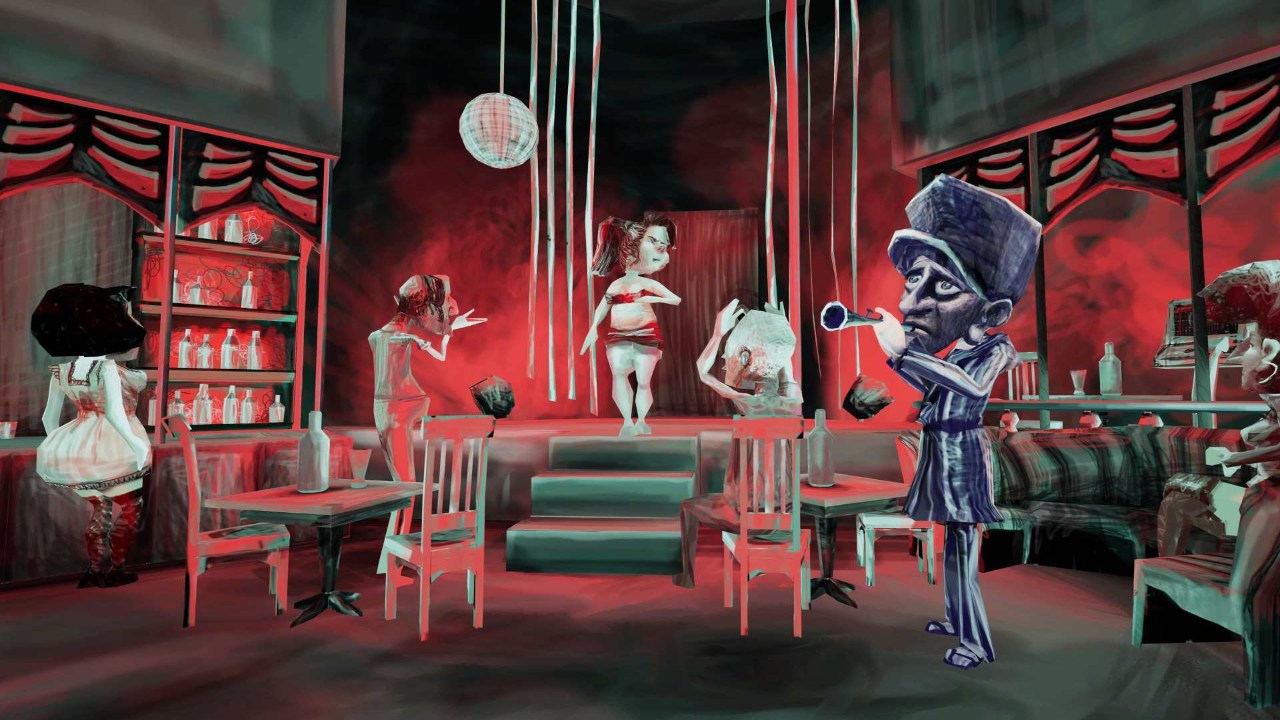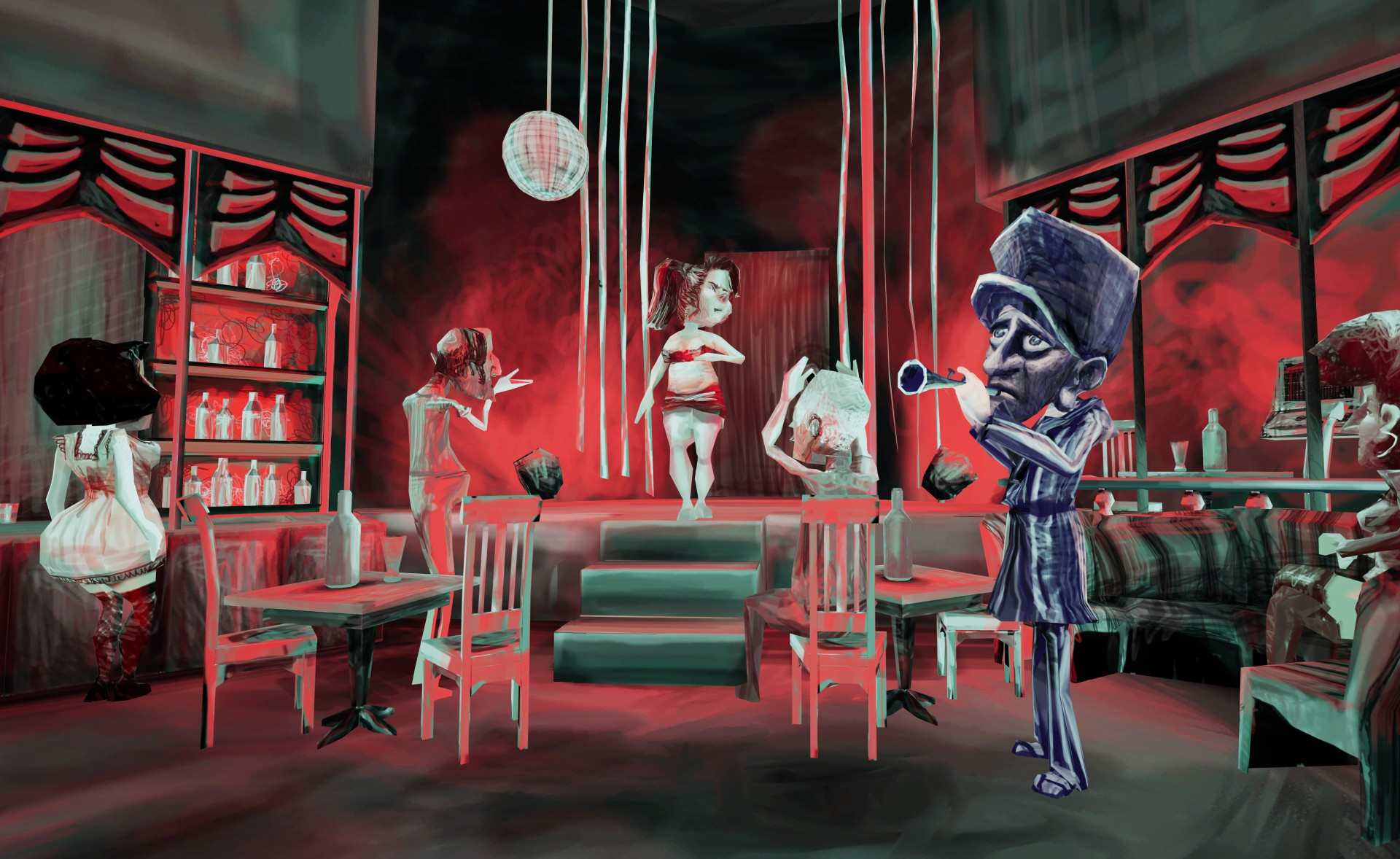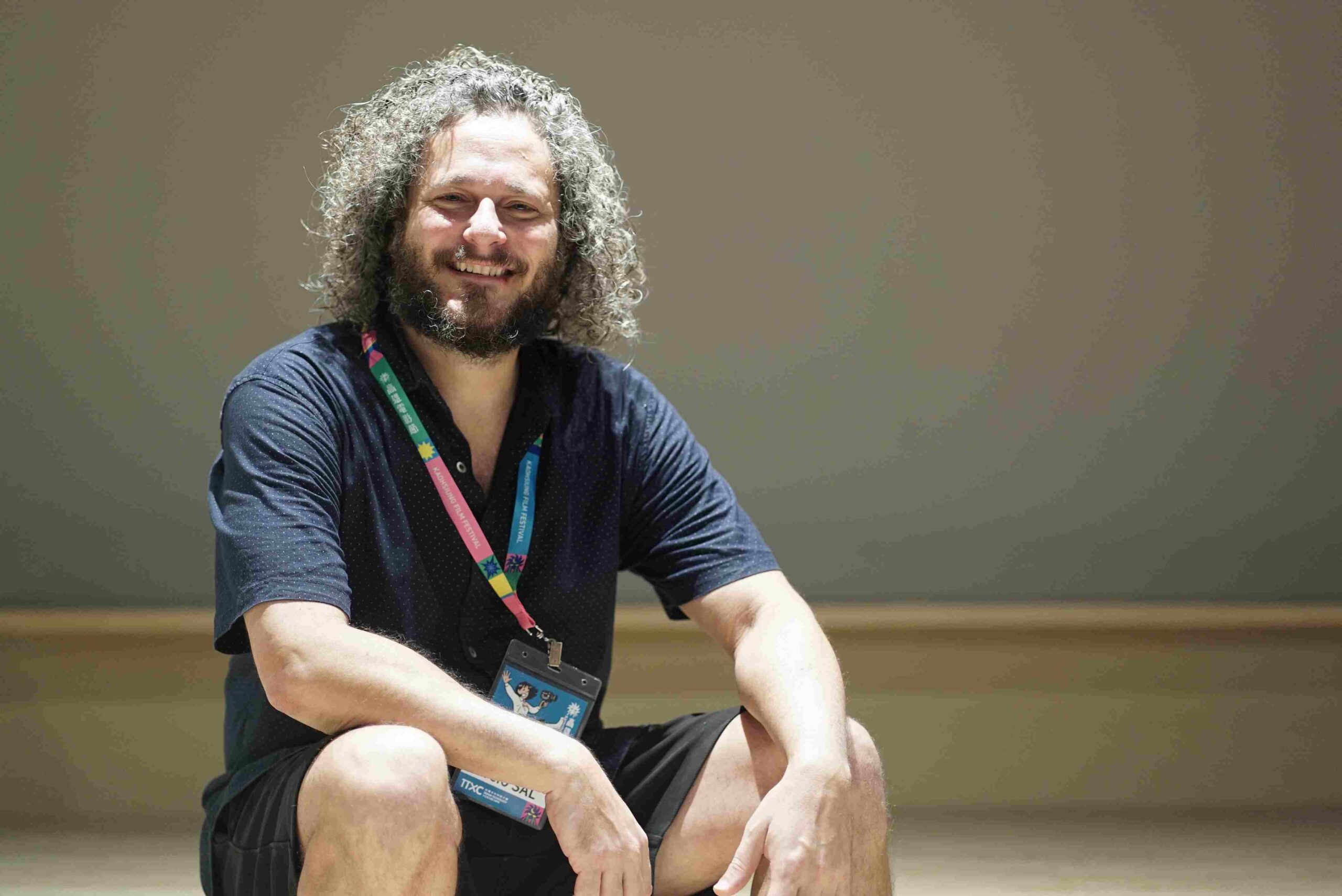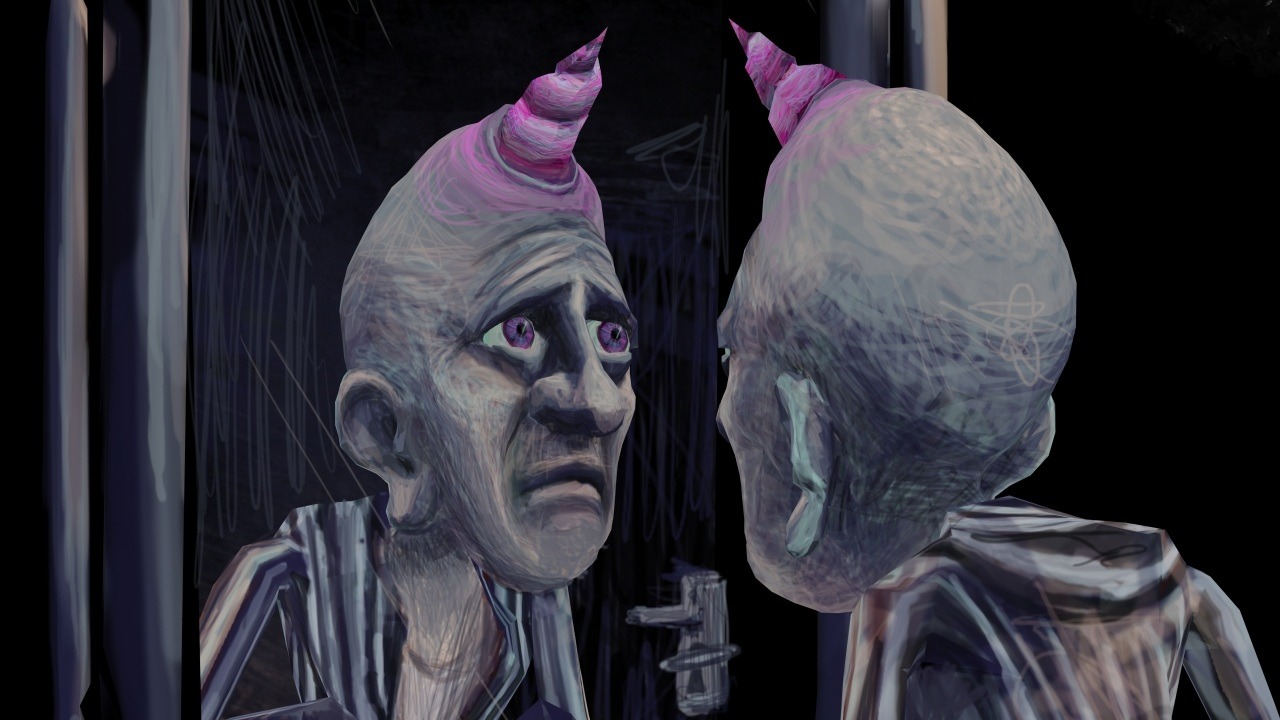Finally Me: A VR Story That Empowers and Sets You Free

Extended Reality
5-minute read
Some creations simply fill you with joy, making you want to dance along. After experiencing them—or more precisely, after sharing in their delight—the world seems a bit more lovable. For me, watching "Finally Me" at Asia's largest immersive film festival, XR DREAMLAND, was exactly such an experience. After taking off the headset, it felt like carnival music was still playing around me, and everything was bathed in neon colors. I couldn't help but dance a little as I walked away.
The story of "Finally Me" is simple yet touching, told through hand-drawn animation: Mr. Saul, a forlorn figure with a tall hat, works as a bartender and musician in a brothel. Only when he's alone in his cramped room does he dare to remove his hat, revealing a unicorn-like horn on his head. This secret is why he's been abandoned and isolated. One day, the brothel door swings open, and Mr. Saul meets a man with a horn of his own.
From that day on, everything changes. Neon colors and a heartbeat sensation begin to paint his world in vibrant hues, and even the music he plays for others transforms into his own theme song. "Finally Me" tells a simple story with powerful emotional resonance. (Source: KFF)
"Finally Me" tells a simple story with powerful emotional resonance. (Source: KFF)
VR as a Tool for Self-Empowerment
Seeing Brazilian director Marcio Sal's constant smile during the interview, it's easy to see how "Finally Me" came from him. With a background in animation and film and TV production, "Finally Me" is his first VR project. The name "Saul," similar to his own surname "Sal," hints at a personal touch: Saul's Jewish identity, carnival colors, and the journey of self-discovery. When we expressed our love for the piece, the director enthusiastically responded with "Thank you so much! Love you!"
 Director Marcio Sal maintains his smile throughout the interview.
Director Marcio Sal maintains his smile throughout the interview.
While "Finally Me" is a joyful piece, it offers much to ponder. XR DREAMLAND featured many works about minority empowerment, making us wonder if VR is the perfect medium for such stories. Beyond immersion, Marcio Sal points out VR's storytelling power comes from its ability to make you truly become another person.
In "Finally Me," we become Saul when we put on the headset. "I try to put the audience in a situation of vulnerability, because some people have never been in this situation and never will be." The director reflects on his childhood experiences, embedding them in the work: "It's an opportunity for people to stand in 'my' position."
"Though there are many pieces with this subject, I hope one day it will be old fashioned and we never have to talk about that anymore," the director adds, his smile slightly fading.
Astute viewers will notice the coming-out metaphor in "Finally Me"—Saul's rainbow-colored horn having a playful touch. While it has queer elements, minorities aren't limited to LGBT. This intentional ambiguity is part of the work's artistic expression.
Simple Interactions and Scale Changes: Building Connection
It's like the creative writing mantra "Show, don't tell." "Finally Me" lets us put on the headset and become someone else, someone initially in a pitiful state. In this work, "Show, don't tell" transforms into: experience, have fun, and dance along. Afterward, you feel different—more precisely, liberated.
But how to achieve complete synchronization with Saul? At a forum, other directors discussed how "first-person perspective seems to be the curse of VR works." We were curious about Marcio Sal's frequent perspective changes, and his answer was simple: scale is the key to the experience.
"Making the audience believe they're changing perspectives isn't easy. When the film starts in third-person, everything is small, including the character. This makes Saul appear more vulnerable and lovable, so you naturally care for and follow him. When you've understood his struggles and feelings, when you're ready to forget you're wearing a headset, I change the perspective as you face the mirror—through it, you realize you're at a 1:1 scale, finding yourself in first-person view, and when you move in front of the mirror, the character moves with you."
Beyond the scale-linked perspective, the director designed simple interactive elements: removing the hat before the mirror and coloring Saul's monotonous clothes. The hat removal cleverly builds connection, "When you remove the hat, you see Saul's horn through the mirror—only you and he know this secret. At this moment, Saul's secret becomes your secret." As for the coloring, it speaks to self-acceptance, "Adding different colors to the clothes shows this journey depends on you."
 The mirror scene is a pivotal design element in Saul's journey. (Source: KFF)
The mirror scene is a pivotal design element in Saul's journey. (Source: KFF)
While many VR works tend to overdo their interactions, Marcio Sal didn't want to use technology just for technology's sake, keeping his design deliberately simple—"You don't need to take a gun and kill monsters, just take off your hat." The simple gesture achieves the same sense of presence.
Music Speaks Where Words Don't
Besides perspective and interaction, you can't overlook the carnival colors and music in "Finally Me." Marcio Sal, like many Brazilians, lives for carnival. "I like to say we wear masks all year, only during carnival do we show who we really are." Carnival is a moment without distinctions between beauty and ugliness, sacred and profane, when you shed societal constraints and return to pure humanity. Like Saul, who throws off his hat in the final carnival scene, dancing with his companions, his dazzling horn raised high.
We asked about the music choices, and they indeed hold special meaning. The initial piece is "The Old Man" by French clarinetist Yom. While seeking inspiration in Jewish klezmer music, as he wanted to create a character with Jewish roots like himself, Spotify recommended this piece. The clarinet's sound could be both crying and joyful, perfectly matching Saul's stage in life: "By then, he had become an old man living in isolation."
The music for the final celebration scene is "O Abre Alas," one of Brazil's earliest carnival songs, created by Chiquinha Gonzaga. Meaning "make way," it symbolizes breakthrough and liberation, showing how Saul has embraced himself—transforming from playing for others to dancing for himself, with steps that might seem odd but are undeniably charming.
"Finally Me" is remarkable for achieving such emotional impact without dialogue and with simple interactions. This owes much to Marcio Sal's precise direction in perspective and music choices. As for production tools: in his first six-degrees-of-freedom (6 DOF) VR film, the animator quickly abandoned Unreal Engine 5's realistic rendering capabilities, choosing hand-drawn animation instead. Compared to pursuing realism, he felt the warmth of hand-drawn animation better suited this story about self-identity. Clearly, the familiar medium proved most effective.
I believe this also speaks to the director's masterful storytelling. "VR isn't a film and it's not a game—it's somewhere between the two, a unique form perfect for telling stories and connecting people with important themes."
After the interview, the director had one last surprise: he gave us a business card that, when viewed through a phone camera, revealed an AR version of Saul emerging from the card. Seeing our amazement, the director beamed with joy—truly a creator who delights in surprising his audience.
Hello again, Mr. Saul.
 Finding you're not alone leads to self-acceptance—this is the heart of "Finally Me." (Source: KFF)
Finding you're not alone leads to self-acceptance—this is the heart of "Finally Me." (Source: KFF)


